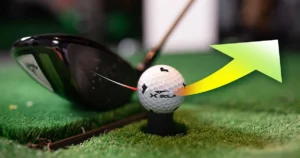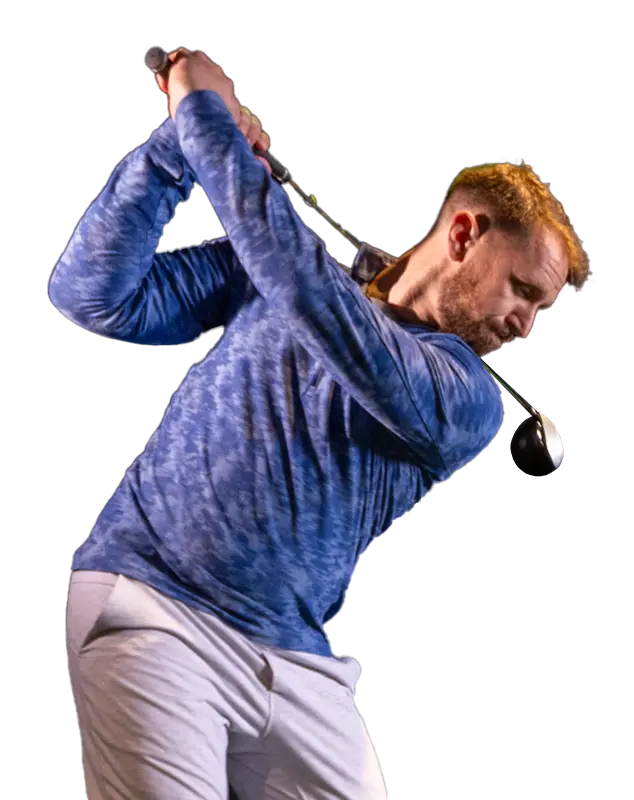A Brief History of Golf Balls
Where did golf balls come from? What were golfers hitting around Scottish courses centuries ago? The humble golf ball has gone through more makeovers than a reality TV star. Each era brought new innovations, new challenges, and probably a few new curse words when things didn’t go as planned.
Well, buckle up because the story of golf balls is way more fascinating than you might think, and it’s filled with more twists and turns than a links course in a windstorm.
If you ever want to learn a little more about indoor golfing simulators after learning a brief history of golf balls we recommend you click HERE.
The Wooden Golf Ball Era
Back in the 1400s, when golf was just getting started in Scotland, golfers were whacking around balls made of hardwoods like boxwood and beech. These weren’t your smooth, perfectly round spheres either.
The wooden golf ball era was tough on everyone involved. Players had to deal with balls that flew about as predictably as a shopping cart with a wonky wheel. When these wooden spheres hit rocks, trees, or pretty much anything harder than grass, they’d crack, split, or sometimes explode into splinters. Golf rounds back then probably sounded like a construction site with all the cracking and thwacking going on.
Despite their limitations, wooden golf balls served their purpose for over 100 years. They were cheap to make, relatively durable for their time, and they got people hooked on the game. Sure, your drives might only go 50 yards on a good day, but hey, at least you weren’t losing expensive equipment when you inevitably launched one into the nearest water hazard. The wooden ball era taught golfers that this game was going to be frustrating no matter what you were hitting, a lesson that somehow still applies today.
The Rise of the Featherie Ball
The 1600s brought us the featherie, and boy, was this a game changer. These golf balls were made by stuffing wet goose or chicken feathers into a leather pouch, then sewing it shut. As the feathers dried, they expanded, creating a hard, round ball that flew much better than anything golfers had seen before. The process was so complex that a skilled craftsman could only make about three or four featherie balls per day.
Featherie golf balls were the premium option of their time, and they performed like it. These balls could fly up to 200 yards. The feather stuffing created a ball that was both light and resilient, bouncing back into shape after impact. However, they had one major weakness: water. If a featherie got wet, it would become soggy and heavy, basically turning into an expensive paperweight.
The featherie era lasted for about 200 years, which tells you just how revolutionary these balls were. They were expensive, costing about the same as a golf club, so losing one in the rough was a real heartbreaker. The featherie golf ball era proved that better equipment could dramatically improve the game, setting the stage for even more innovations to come.
Rubber Core Golf Balls by Haskell
The early 1900s brought us the Haskell ball, named after Coburn Haskell, who revolutionized golf again by creating a ball with a rubber core wrapped in rubber thread and covered with gutta-percha. This design gave golfers the best of both worlds: the durability of the guttie with the lively performance of a rubber core.
The Haskell ball design was so effective that it became the template for modern golf balls. This was then added to in the next era, something that forever changed the game. This is where a brief history of golf balls forever becomes epic.
The Advent of Technology
Fast forward to today, and we have golf balls that would seem like magic to those Scottish golfers swinging at wooden spheres. Before the rise of golf simulators and advanced tracking systems, improving your swing meant spending hours on the driving range or relying on a coach’s trained eye.
But with the advent of simulator technology, the game has evolved in ways early golfers could never have imagined. High-speed cameras, radar-based tracking, and data-driven analysis have transformed how players train, compete, and even enjoy the sport recreationally.
More than that, simulators now capture intricate swing data like club path, ball speed, spin rate, and launch angle in real time, giving players the kind of feedback that was once only available to touring pros.

Our Modern Golf Balls
Modern balls like the TaylorMade TP5 pix represent the cutting edge of golf ball technology, combining multi-layer construction, tour-level performance, and visual technology designed specifically for feedback and tracking. That means more reliable data, more accurate ball flight simulations, and better swing analysis.
At X-Golf Frisco, we’ve chosen TaylorMade TP5 pix balls for a reason: they’re engineered to work seamlessly with our advanced simulator systems. Their visual alignment aids not only help golfers see spin and roll more clearly but also assist our technology in delivering pinpoint shot tracking.
You have learned a little about how modern golf balls work during a brief history of golf balls, however, if you would like to learn more about our simulators, we recommend you check out this reliable source, “How Simulators Improve your Game.” Click HERE!
Conclusion of A Brief History of Golf Balls
The journey from wooden golf balls to today’s high-tech marvels is really the story of golf itself. Each innovation changed not just how far the ball went, but how the game was played, who could afford to play it, and what was possible on the course. From hand-carved wooden spheres that might splinter on impact to precision-engineered balls that can communicate with simulator technology, golf balls have been the quiet revolutionaries of the sport.
The evolution of golf balls shows us that innovation in golf is never really finished. Who knows what the next breakthrough will be? Maybe balls that can adjust their own dimple patterns mid-flight, or balls that give you real-time feedback on your swing. What we do know is that golfers will always be looking for that extra edge, that perfect shot, and that elusive lower score. The golf ball will continue to evolve, and so will the game we love.

Want to Check Out X-Golf Frisco?
Ready to experience how far golf ball technology has come? X-Golf Frisco offers the ultimate indoor golf experience where you can test your skills with the most advanced simulator golf balls available. Our cutting-edge technology tracks every detail of your shot, letting you play world-famous courses year-round while getting professional-level feedback on your game.
Want to try out X-Golf Frisco and the newest golf balls found in our “A Brief History of Golf Balls” Click HERE to book a Tee Time.
Whether you’re a beginner curious about golf or a seasoned player looking to improve your skills, X-Golf Frisco provides the perfect environment to enjoy the game regardless of weather conditions. Come see how modern golf ball technology combines with our state-of-the-art simulators to create an experience that’s both fun and educational. Book your session today and discover why X-Golf Frisco is the premier destination for indoor golf in the area!
Wow! If you read all the way to the end of “A Brief History of Golf Balls” we recommend you check out another blog that may interest you, made by yours truly, “Best Indoor Golf Training Aids.”


